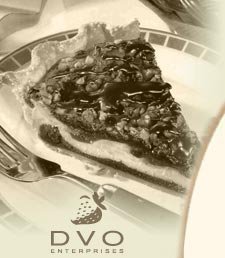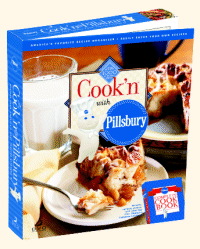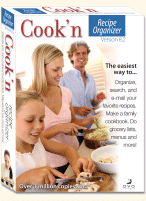
|
Never miss another recipe... Sign up for our free monthly newsletter today!
Subscribing will not result in more spam! I guarantee it! NEWSLETTER
• Current Issue• Newsletter Archive • Sign Up Now 
Cook'n with Betty Crocker 
Cook'n with Pillsbury 
Cook'n with a Taste of Home 
Cook'n in Italy 
Cook'n in Mexico |
 |
07-Get the Facts on Food Safety |
|
The recipe below is complete except for the ingredient amounts (_). Since the recipes offered at DVO.com are brand name recipes, our publisher partners require us to account for each recipe distributed. To get the entire recipe click Request Recipe below. This is the best 07-Get the Facts on Food Safety recipe on the web!! Food safety concerns everyone, from food manufacturers, food processors and packagers and supermarkets to everyday people who prepare and cook food in their homes. Why worry about food safety? Because microorganisms are always with us, on people and animals, in the air and water and on food-and especially on poultry. Safe handling is particularly important to prevent the spread of salmonella, a very prevalent bacteria found in water and soil, and in the intestinal tract and on the skin of humans and all animals and birds. Because it is so common, salmonella may be present in raw foods, such as chicken and turkey, and may cause illness if the bird is improperly handled or undercooked. Someone infected with salmonella develops flu-like symptoms six to forty-eight hours after eating, and the illness can last two to seven days. It's also important to note that salmonella can be fatal under certain conditions, such as compromised immune systems, the very young and the very old. The Real Scoop about Bacteria, Food Spoilage and Food Poisoning MYTH: Roasting poultry in a brown paper bag makes it more moist. FACT: Use oven-roasting bags designed to be used in the oven instead (they are available in your grocery store in the same section as foil and plastic wrap). Paper bags are not sanitary and may catch on fire. Many brown paper bag recipes also state to turn the oven off for a certain period of time and then turn the heat back on. This may cause the temperature to fall too low, allowing illness-causing bacteria to grow. Properly cooked chicken can be moist and tender-without the brown paper bag. MYTH: I can cook poultry in my dishwasher. FACT: Of course we all know dishwashers weren't designed to cook foods, but dishwasher-cooking recipes have circulated like urban legends. A dishwasher cannot reach or sustain a high enough temperature to cook poultry. This is one urban legend to pass by. MYTH: I can cut up raw poultry on a wooden cutting board. FACT: Wooden cutting boards should not be used for cutting up or preparing raw poultry, meat or fish. The porous surface of wood and any cracks in the board can capture bacteria and allow it to grow. They are also harder to clean thoroughly. Use only plastic cutting boards for cutting up raw poultry, meat or fish; after cutting, clean the cutting board thoroughly by washing with a mixture of 2 teaspoons of chlorine bleach to 1 quart (4 cups) water. MYTH: If food doesn't smell bad or look bad, it's okay to eat. FACT: Bacteria that cause food to spoil can grow at refrigerator temperatures. Food spoilage can make food smell bad, and various molds can form on the food, which is an obvious clue to throw it out! However, several common bacteria can spoil food without leaving any telltale signs of odor or appearance. When in doubt, throw it out! Eating questionable food and getting sick isn't worth any of the money that would be saved. MYTH: "We've always left turkey leftovers out on the counter after dinner to cool and then to make sandwiches with them later on. Nobody has ever gotten sick, so why should I change the way I do things?" FACT: To help prevent the growth of illness-causing bacteria, never leave foods out longer than two hours. Most food-poisoning bacteria don't grow at refrigerator temperatures (although some do), but they thrive at room temperatures (60° to 90°). These bacteria (such as Salmonella, Staphylococcus, Listeria, Clostridium perfringens and Clostridium botulinum) are also called pathogens. Eating these types of bacteria may lead to sickness, disease or even death. Unfortunately, appearance, taste or smell do not always reveal these bacteria. From "Betty Crocker Best Chicken Cookbook." Text Copyright 1999 General Mills. Used with permission of the publisher, Wiley Publishing, Inc. All Rights Reserved. 02-How Do I Buy Great Chicken or Turkey? 03-Poultry Storage 04-How to Flatten Chicken Breasts 05-Cutting up a Whole Chicken 06-How to Bone a Chicken Breast 07-Get the Facts on Food Safety 08-Handling Food Safely 10-Thermometer Facts 11-Roasting Chicken and Turkey 12-Great Grilling 14-Poaching Chicken 15-How Much Poultry? 16-Microwaving Poultry 17-Use Your Favorites! 18-Moist Poultry Secrets 09-Check It Out! 13-Carving Poultry |
|
|
Affiliate Program | Privacy Policy | Other Resources | Contact Us
© 2008 DVO Enterprises, Inc. All rights reserved. Sales: 1-888-462-6656 |
